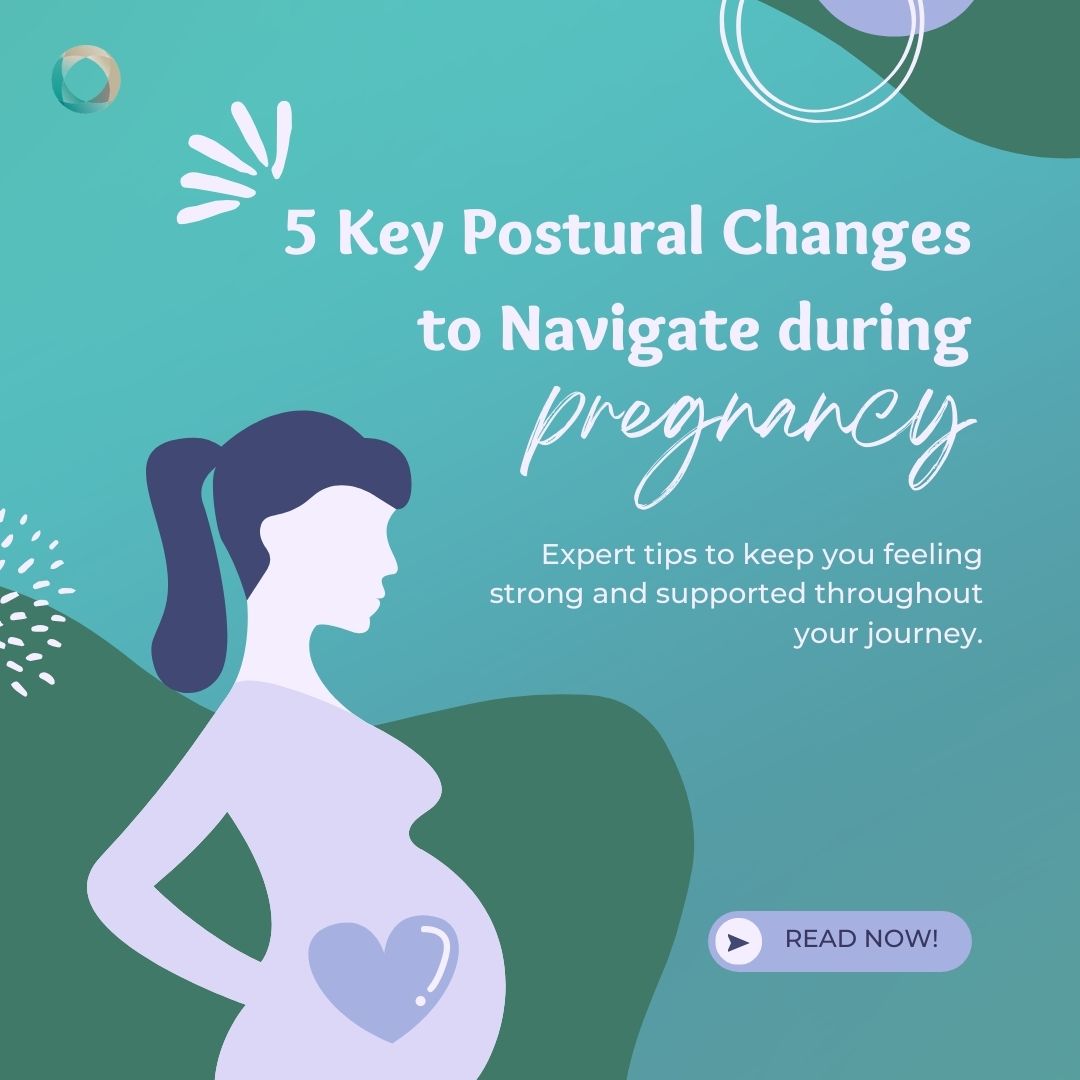Pregnancy is a transformative journey filled with joy, anticipation, and countless changes. While much of the focus understandably centers around the growth and development of the baby, it’s essential not to overlook the significant postural changes that occur within a woman’s body during this time.

These changes can have a profound impact on comfort, mobility, and overall well-being, making it crucial for expectant mothers to be aware of and navigate them effectively.
- Center of Gravity Shifts Anteriorly One of the most noticeable changes during pregnancy is the shift in the body’s center of gravity. As the baby grows and the uterus expands, the body’s weight distribution changes, causing the center of gravity to shift forward. This shift can lead to feelings of imbalance or clumsiness, increasing the risk of falls or accidents, particularly as the pregnancy progresses and the belly grows larger. To mitigate this risk, it’s important to focus on maintaining good posture and engaging the core muscles to support the growing belly. Simple adjustments, such as widening your stance when standing or walking and avoiding sudden movements, can help improve stability and reduce the risk of injury.
- Abdominal Muscle Stretching As the uterus expands to accommodate the growing baby, the abdominal muscles undergo significant stretching. While this stretching is a natural part of pregnancy, it can weaken the abdominal muscles and disrupt deep core stabilization, leading to poor intraabdominal pressure management. This may increase the risk of diastasis recti, a condition where the abdominal muscles separate along the midline. Diastasis recti can contribute to lower back pain and pelvic instability, making it essential to address and manage during pregnancy. Incorporating exercises that strengthen the core muscles, such as pelvic tilts, modified planks, and pelvic floor exercises, can help support the abdominal wall and minimize the risk of diastasis recti.
- Increased Forward Head Posture The added weight of the growing belly can also contribute to changes in posture, including increased forward head posture. This forward head posture can lead to neck tightness and discomfort, as well as tightness in the shoulders and chest muscles. Over time, these imbalances can contribute to chronic pain and discomfort, making it important to address them early on. Stretching exercises that target the neck, chest, and shoulder muscles can help alleviate tension and improve posture. Additionally, practicing good posture habits, such as sitting and standing tall with the shoulders back and the chin tucked, can help prevent further exacerbation of forward head posture.
- Flattening of Thoracic Curve Pregnancy-induced changes in posture can also affect the curvature of the spine, particularly in the thoracic region. As the belly grows and the center of gravity shifts forward, there is often a flattening of the thoracic curve, leading to muscle weakness and tightness in the neck and upper back. This can result in decreased thoracic spine and rib mobility, impacting breathing and upper body strength. To address these issues, focus on exercises that target the thoracic spine and improve mobility, such as thoracic spine rotations and chest opening stretches. Strengthening exercises for the upper back and shoulder muscles can also help alleviate discomfort and improve posture.
- Increased Lumbar Curve As the body adjusts to the changes in weight distribution and center of gravity, the lumbar curve may increase to maintain balance. While this increased lumbar curve is a natural adaptation to pregnancy, it can also lead to shortened back muscles that are overworked and weakened over time. This can contribute to lower back pain and discomfort, particularly in the later stages of pregnancy. To support the lower back and pelvis, focus on exercises that strengthen the core muscles, such as pelvic tilts, hip bridges, and modified squats. Additionally, practicing good body mechanics, such as lifting with the legs and avoiding heavy lifting whenever possible, can help reduce strain on the lower back and pelvis.
In addition to these physical changes, it’s important to acknowledge the potential impact of hormonal changes on pelvic stability and function during pregnancy. Hormonal increases, such as relaxin, can contribute to pelvic girdle pain, sacroiliac joint dysfunction, and pubic symphysis dysfunction, further highlighting the importance of addressing postural changes and maintaining pelvic stability throughout pregnancy.
Seeking the guidance of a pelvic floor physical therapist can be invaluable for expectant mothers, providing personalized guidance and support to address postural changes, manage discomfort, and promote optimal pelvic health. By understanding and actively addressing these postural changes during pregnancy, women can help minimize discomfort, reduce the risk of injury, and support their overall well-being throughout this transformative journey. Remember, every pregnancy is unique, so be sure to consult with your healthcare provider before starting any new exercise program or making significant changes to your routine. Embrace these changes, listen to your body, and prioritize self-care as you navigate the beautiful journey of pregnancy.
















